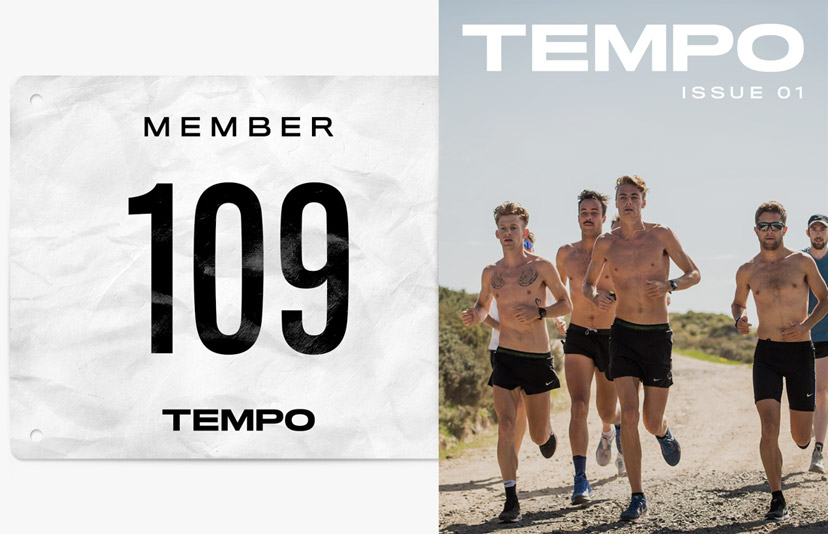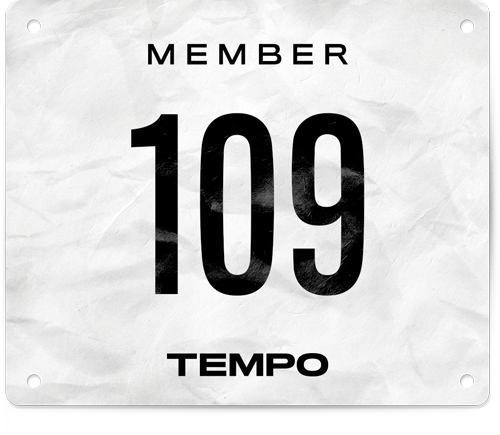Performance
Unlocking your greatness
Stop doing too much, and you could become a better runner
In his second column for us, Australian Olympian and one of our greatest ever 1,500m runners, Ryan Gregson talks about the benefits of a sustainable, consistent approach to training. You can read Ryan's first column for us here.
Finding the balance in your training so it can be sustainable for a long period of time is something that is difficult to master and there is no exact formula. Too often we hear that to be successful at running it’s all about hard work. Phrases such as ‘go hard or go home’ and ‘go hard or suffer the rest of your life’ can be motivating to get us through various moments where we may be lacking motivation, however what I have found from immersing myself with some of the world's best athletes is that they generally have an innate ability to know when to go hard, and when to go easy.
Sometimes in training, the hard thing to do is to stick to your plan and not get sidetracked with what other runners are doing. Our plan might be to go hard a couple of times per week in specific sessions, moderate in some longer runs, and easy for the rest of the supplemental mileage. Sticking to this is the hard part.
"Sometimes in training, the hard thing to do is to stick to your plan and not get sidetracked with what other runners are doing."
Ryan Gregson
Last year, when the COVID-19 pandemic cancelled and postponed many running events, the first thing Melbourne Track Club coach Nic Bideau did was get his athletes to drop down from three hard sessions a week to two.
The thinking behind this was that as there were no races, runners would have uninterrupted training for the foreseeable future. The positive of this was that runners had more time to get fit and strong, however the negative was that now runners were possibly more susceptible to injury due to continual higher mileage without backing off for races. This might be confusing for some, as it might seem logical to think that races increase chances of injury, however I have found that race week provides a time for runners to back off training a touch, rest up, and get on top of their energy levels.
In short, moving to two sessions per week was a way for our training group to achieve a sustainable program through a bizarre period of time, and still move forward.
In our training group, Stewy McSweyn is clearly an amazing athlete, but what is probably unknown to many onlookers is his ability to gauge his training effort. There are guys in the group, myself included, who have had a tendency to overreach at times. This is forgivable, because at the end of the day it’s a desirable trait - it’s refreshing to see people try hard and give their full effort. Stewy however, rarely empties the tank at training. He is happy to do the bulk of his repetitions with the group, maybe the odd rep or two faster, but in general his aim is to absorb the training and then get ready for the next session. I believe this is a major reason why he is able to stay healthy and injury free, and race and train consistently well all year round.
"Stewy however, rarely empties the tank at training. He is happy to do the bulk of his repetitions with the group, maybe the odd rep or two faster, but in general his aim is to absorb the training and then get ready for the next session."
Ryan Gregson
Consistency is what we should all be aiming to achieve in training. My friend and former training partner Collis Birmingham told me when I was younger to not focus on each individual session, but to look back at my training week on a Sunday night and think ‘that was a good week of training’. Adding layer upon layer, week after week, is what will make you super fit and strong in the long run.
I witnessed first hand what consistency and also the lack of consistency can do to performance earlier in my career. I had a really consistent 2009, which led to a breakthrough year in 2010, but then I was continually injured from 2011 to 2014, which led to subpar performances. I finally had a consistent year of training in 2015 which enabled me to return to my best form and make the Olympic 1500m final in 2016. The recipe was simple - get healthy and find a training load that was sustainable for a long period of time.
Easier said than done!
Strava is a great tool to track your training, view the training of others, and support other runners in the running community. What can be dangerous though is becoming absorbed with what some elite runners are doing in training. I follow some marathon runners on Strava purely as a form of entertainment. My mind boggles when I look at some of the sessions these guys can do. What is refreshing though is seeing other runners who train more moderately have success at the marathon without doing some of these incredible sessions that get people talking. If someone has done an amazing session on Strava, there could be many things at play - conditions, footwear, pacing, or they may have tapered. It is so important to stick to your own plan and not get sidetracked with what we see or hear.
I’ll leave you with a quote from Hall of Fame baseball pitcher Tom Seaver that can also be applied to running - “In baseball, my theory is to strive for consistency, not to worry about the numbers. If you dwell on statistics you get shortsighted, if you aim for consistency, the numbers will be there at the end.”


